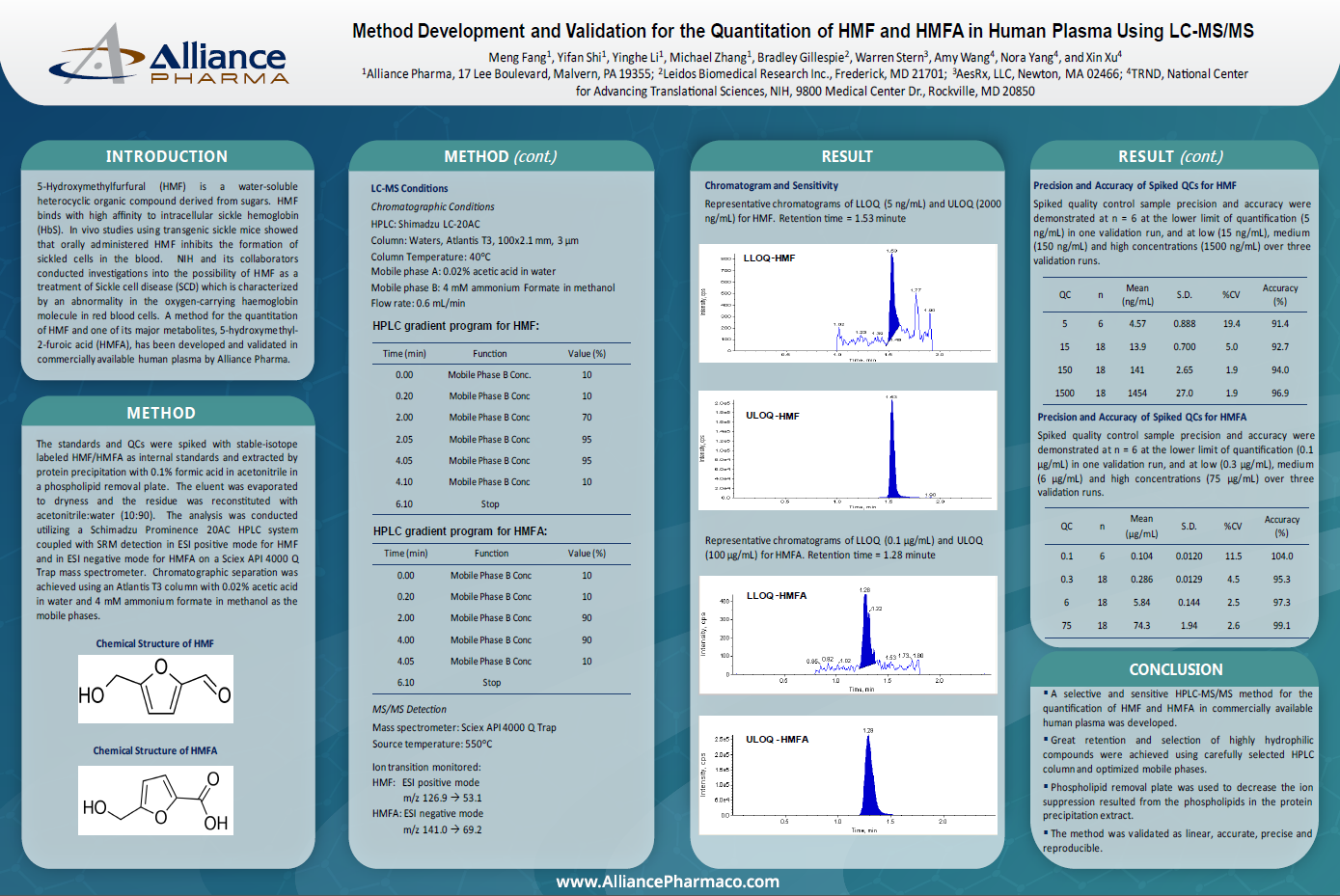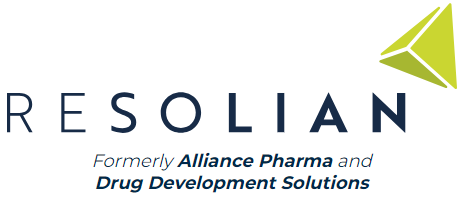5-Hydroxymethylfurfural (HMF) is a water-soluble heterocyclic organic compound derived from sugars. HMF binds with high affinity to intracellular sickle hemoglobin (HbS). In vivo studies using transgenic sickle mice showed that orally administered HMF inhibits the formation of sickled cells in the blood. NIH and its collaborators conducted investigations into the possibility of HMF as a treatment of Sickle cell disease (SCD) which is characterized by an abnormality in the oxygen-carrying haemoglobin molecule in red blood cells. A method for the quantitation of HMF and one of its major metabolites, 5-hydroxymethyl-2-furoic acid (HMFA), has been developed and validated in commercially available human plasma by Alliance Pharma.

Method
The standards and QCs were spiked with stable-isotope labeled HMF/HMFA as internal standards and extracted by protein precipitation with 0.1% formic acid in acetonitrile in a phospholipid removal plate. The eluent was evaporated to dryness and the residue was reconstituted with acetonitrile:water (10:90). The analysis was conducted utilizing a Schimadzu Prominence 20AC HPLC system coupled with SRM detection in ESI positive mode for HMF and in ESI negative mode for HMFA on a Sciex API 4000 Q Trap mass spectrometer. Chromatographic separation was achieved using an Atlantis T3 column with 0.02% acetic acid in water and 4 mM ammonium formate in methanol as the mobile phases.
LC-MS Conditions
Chromatographic Conditions
HPLC: Shimadzu LC-20AC
Column:Waters, Atlantis T3, 100x2.1mm, 3 μm
Column Temperature: 40oC
Mobile phase A: 0.02% acetic acid in water
Mobile phase B: 4 mM ammonium Formate in methanol
Flow rate: 0.6 mL/min
MS/MS Detection
Mass spectrometer: Sciex API 4000 Q Trap
Source temperature: 550oC
Ion transition monitored:
HMF: ESI positive mode
m/z 126.9 → 53.1
HMFA: ESI negative mode
m/z 141.0 → 69.2
Precision and Accuracy of Spiked QCs for HMF
Spiked quality control sample precision and accuracy were demonstrated at n = 6 at the lower limit of quantification (5 ng/mL) in one validation run, and at low (15 ng/mL), medium (150 ng/mL) and high concentrations (1500 ng/mL) over three validation runs.
Precision and Accuracy of Spiked QCs for HMFA
Spiked quality control sample precision and accuracy were demonstrated at n = 6 at the lower limit of quantification (0.1 μg/mL) in one validation run, and at low (0.3 μg/mL), medium (6 μg/mL) and high concentrations (75 μg/mL) over three validation runs.
Conclusion
- A selective and sensitive HPLC-MS/MS method for the quantification of HMF and HMFA in commercially available human plasma was developed.
- Great retention and selection of highly hydrophilic compounds were achieved using carefully selected HPLC column and optimized mobile phases.
- Phospholipid removal plate was used to decrease the ion suppression resulted from the phospholipids in the protein precipitation extract.
- The method was validated as linear, accurate, precise and reproducible.
Acknowledgements
Meng Fang, Yifan Shi, Yinghe Li, Michael Zhang, Bradley Gillespie, Warren Stern, Amy Wang, Nora Yang, and Xin Xu
Alliance Pharma, 17 Lee Boulevard, Malvern, PA 19355; Leidos Biomedical Research Inc., Frederick, MD 21701; AesRx, LLC, Newton, MA 02466; TRND, National Center for Advancing Translational Sciences, NIH, 9800 Medical Center Dr., Rockville, MD 20850







